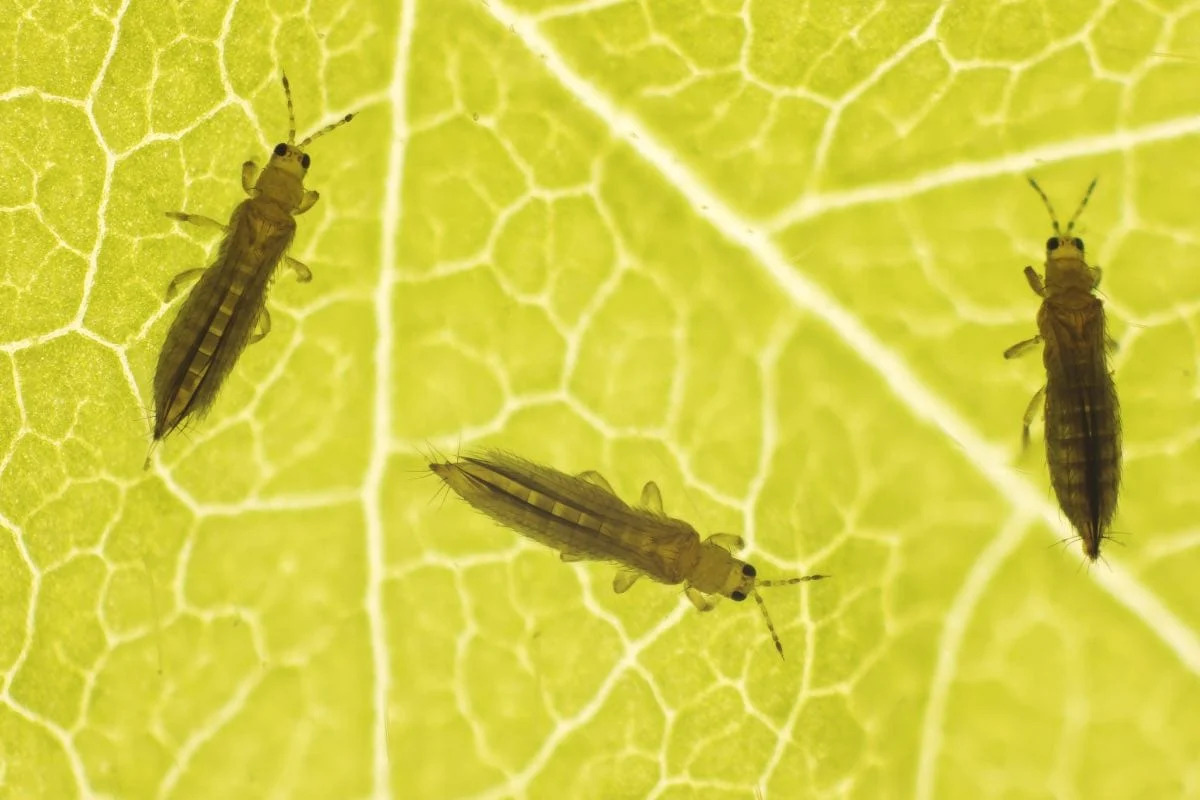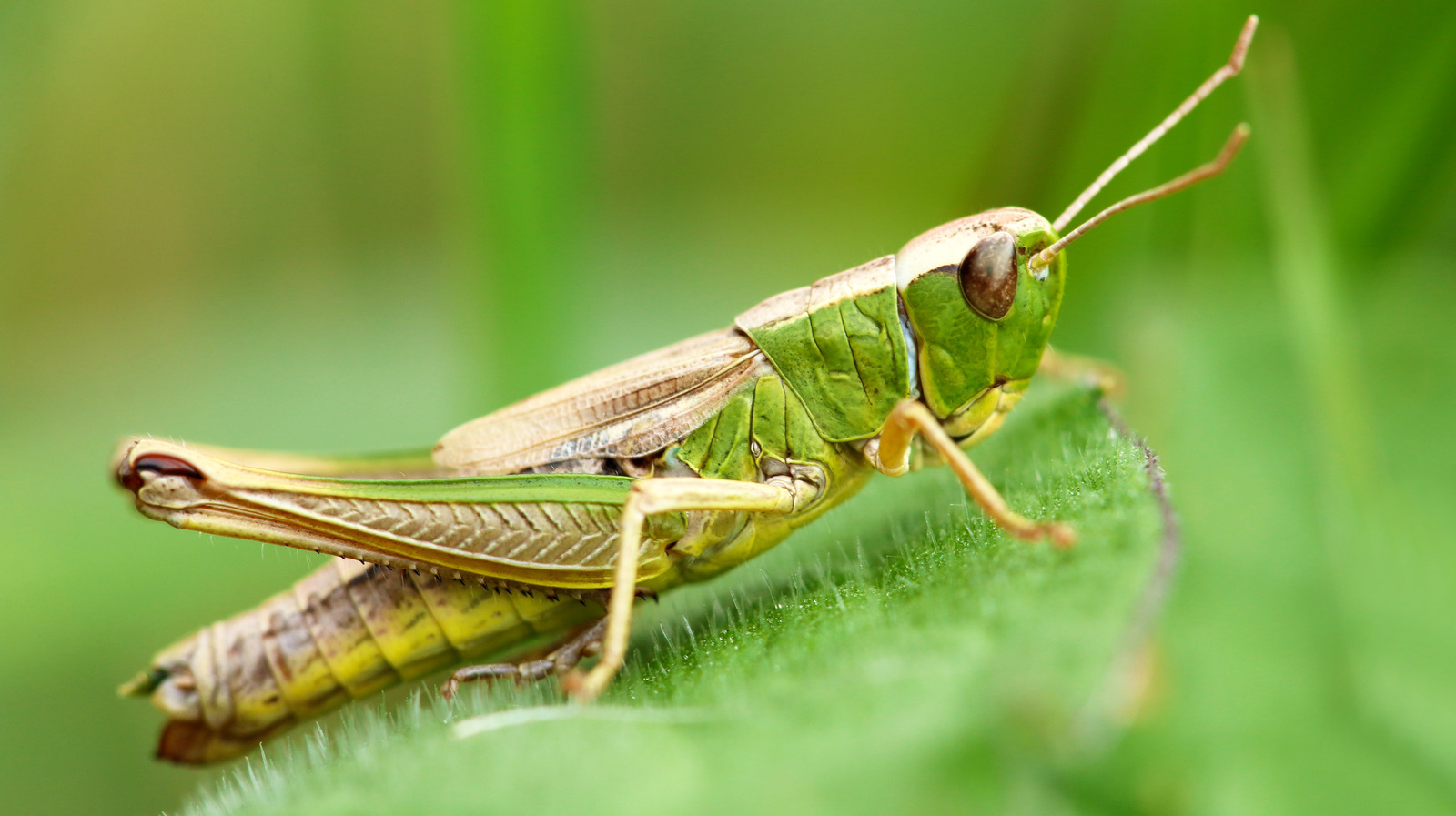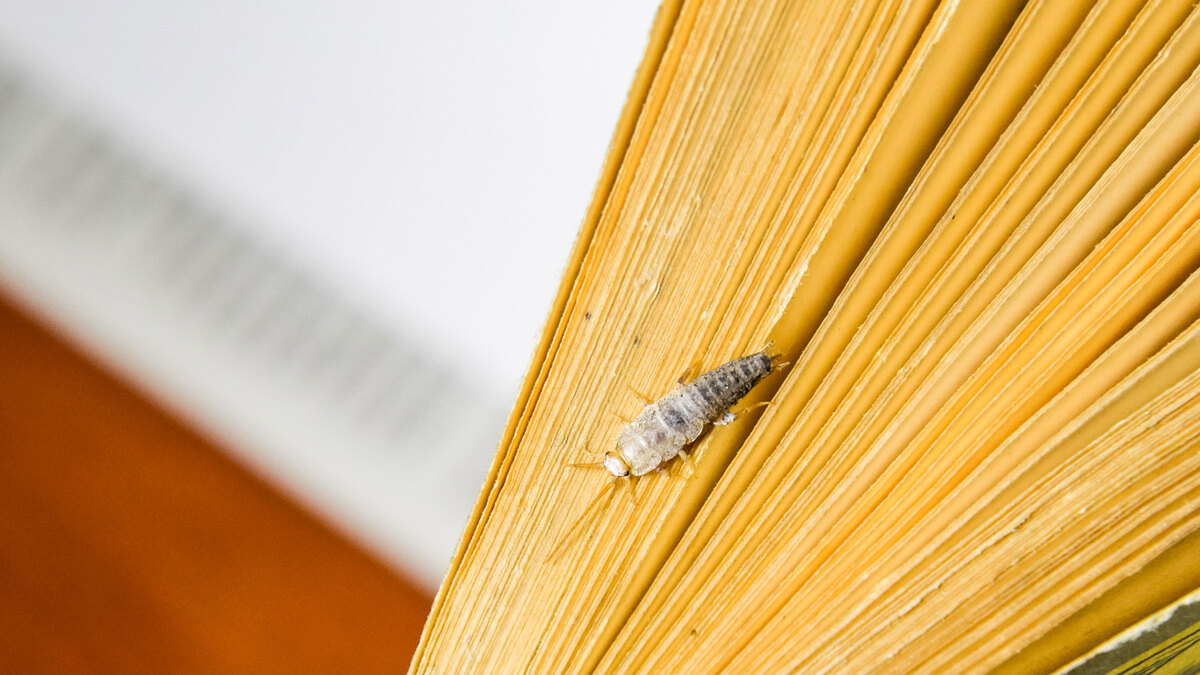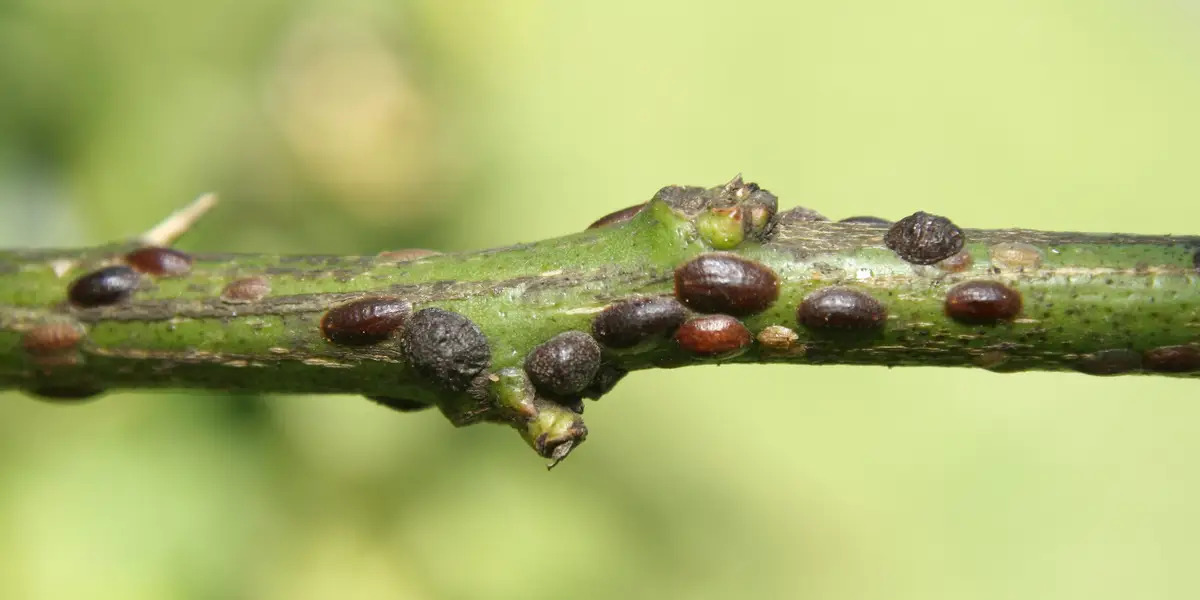Home>Gardening News and Trends>Latest News>How Does Sulfur Kill Insects


Latest News
How Does Sulfur Kill Insects
Modified: January 22, 2024
Read the latest news on how sulfur effectively kills insects. Discover the mechanisms behind this natural insecticide and its impact on insect populations.
(Many of the links in this article redirect to a specific reviewed product. Your purchase of these products through affiliate links helps to generate commission for Chicagolandgardening.com, at no extra cost. Learn more)
Table of Contents
- Introduction
- Overview of Sulfur
- The Mechanism of Action of Sulfur on Insects
- Effects of Sulfur on Insect Respiratory System
- Sulfur’s Impact on Insect Nervous System
- The Role of Sulfur in Disrupting Insect Reproduction
- Sulfur as a Repellent for Insects
- Potential Risks and Limitations of Sulfur as an Insecticide
- Conclusion
Introduction
When it comes to pest control, there are a plethora of options available to homeowners and farmers alike. From chemical-based insecticides to natural remedies, finding the right solution to keep insects at bay can sometimes be a challenge.
One widely used natural insecticide is sulfur, a non-metallic chemical element that is found abundantly in nature. Sulfur has been utilized for centuries to control various insect pests, particularly in agriculture. Its efficacy as an insecticide is rooted in its unique properties and the way it interacts with the physiological systems of pests.
In this article, we will delve into how sulfur kills insects and explore the different mechanisms through which it achieves this effect. Understanding the mode of action of sulfur can provide valuable insights into its effectiveness as an insecticide and help us make informed decisions about its use.
It is important to note that while sulfur is generally considered safe for use in pest control, it is crucial to follow label instructions and use it responsibly. As with any chemical or natural pesticide, there are potential risks and limitations associated with its use, which we will discuss later in this article.
So, let’s dive into the fascinating world of sulfur and unravel the mystery behind its insecticidal properties. By the end of this article, you will gain a deeper understanding of how sulfur can be a powerful tool in managing insect pests and why it has stood the test of time as an effective and environmentally friendly solution.
Overview of Sulfur
Sulfur is a naturally occurring element that is found in various forms, such as elemental sulfur, sulfides, and sulfates. It is commonly used in agriculture, horticulture, and pest control due to its versatile properties and effectiveness against a wide range of pests.
The use of sulfur as an insecticide dates back centuries, with historical records documenting its use in ancient civilizations such as Egypt and Greece. In modern times, sulfur is primarily used as a fungicide and acaricide in addition to its insecticidal properties.
One of the key advantages of sulfur as an insecticide is its low toxicity to mammals and beneficial insects, making it an environmentally friendly option. Furthermore, sulfur has a relatively low cost compared to other chemical insecticides, making it a cost-effective choice for pest management.
Sulfur is available in various formulations, including dusts, wettable powders, and liquid sprays, allowing for flexible application methods depending on the target pest and the desired level of control.
It’s worth noting that sulfur should be used cautiously on certain plant species, as some may be sensitive to sulfur and may experience phytotoxicity when exposed to high concentrations. Therefore, it is recommended to conduct a small-scale test before treating an entire plant or crop to ensure compatibility.
In addition to its direct insecticidal properties, sulfur also has some secondary benefits. It can help improve soil fertility and control certain plant diseases, such as powdery mildew on grapes and blossom blight on fruit trees. This makes sulfur a valuable tool not just for insect control, but also for overall plant health and disease management.
Now that we have a broad understanding of sulfur and its general uses, let’s explore how sulfur interacts with the physiology of insects to effectively kill them.
The Mechanism of Action of Sulfur on Insects
Sulfur’s effectiveness as an insecticide lies in its ability to disrupt vital physiological processes within insects, leading to their demise. The precise mode of action can vary depending on the specific insect species and the formulation of sulfur used, but there are several common mechanisms through which sulfur exerts its insecticidal effects.
One of the primary ways sulfur acts on insects is by damaging their respiratory system. Sulfur molecules can penetrate the exoskeleton of insects and interfere with respiration, leading to suffocation and ultimately death. Sulfur particles can disrupt the gas exchange process by blocking the spiracles, which are the tiny openings on the insect’s body through which oxygen enters and carbon dioxide is released. This disruption deprives the insect of the oxygen it needs to survive, leading to respiratory failure.
Sulfur also affects the nervous system of insects, leading to paralysis and death. It can interfere with nerve impulses by disrupting the proper functioning of neurotransmitters, which are chemical messengers responsible for transmitting signals between nerve cells. This disruption leads to a breakdown in communication within the insect’s nervous system, resulting in paralysis and ultimately death. The impact on the nervous system can vary depending on the insect species, but sulfur has been found to be particularly effective against mites, aphids, and certain beetles.
Furthermore, sulfur can disrupt the reproductive cycle of insects, preventing them from reproducing and causing a decline in population numbers. Sulfur particles can interfere with the development of eggs, larvae, and pupae, either by directly damaging them or by disrupting the hormonal balance necessary for their growth and metamorphosis. This disruption in the reproductive cycle can have a long-term impact on the pest population, reducing their numbers and preventing future generations from causing damage to plants or crops.
It is important to note that the mechanism of action of sulfur can also vary depending on the formulation used. For example, wettable sulfur may act more directly on the insect’s body, while vaporized sulfur can affect insects through inhalation. The effectiveness of sulfur as an insecticide is also influenced by factors such as temperature, humidity, and the susceptibility of the target pest species.
Having a clear understanding of how sulfur interacts with insects can help us utilize this natural insecticide more effectively and make informed decisions about its application.
Effects of Sulfur on Insect Respiratory System
One of the primary mechanisms by which sulfur acts as an insecticide is by targeting the respiratory system of insects. Sulfur’s ability to disrupt the respiratory process is key to its effectiveness in controlling pests.
When sulfur comes into contact with an insect, it can penetrate the exoskeleton and enter the insect’s body. Once inside, sulfur particles can interfere with the insect’s respiratory system, leading to suffocation and ultimately death.
The respiratory system of insects consists of tiny tubes called tracheae, which carry oxygen to the insect’s tissues and remove carbon dioxide waste. Oxygen enters the tracheal system through small openings called spiracles, located on the insect’s body. These spiracles act as entry and exit points for gases.
When sulfur particles come into contact with the insect’s spiracles, they can block or partially obstruct these openings. This obstruction prevents the efficient exchange of gases, depriving the insect of the oxygen it needs for survival and hindering the release of carbon dioxide.
The blockage of the spiracles by sulfur particles disrupts the insect’s ability to engage in respiration effectively. As a result, the insect experiences suffocation and respiratory failure, leading to its demise.
It’s important to note that the exact effect of sulfur on an insect’s respiratory system may vary depending on factors such as the concentration of sulfur, the size of the insect, and the duration of exposure.
Insects with a more open tracheal system, such as certain beetles or grasshoppers, may be more susceptible to the respiratory effects of sulfur. In contrast, insects with a more closed tracheal system, like ticks or mites, may be less affected by sulfur’s respiratory disruption. However, sulfur can still have secondary effects on these insects by targeting other physiological processes.
Understanding the impact of sulfur on an insect’s respiratory system helps us appreciate its effectiveness as an insecticide. By disrupting the respiratory process, sulfur provides an efficient and natural means of controlling pests. However, it is crucial to use sulfur responsibly and according to label instructions to minimize any potential risks and ensure effective pest management.
Sulfur’s Impact on Insect Nervous System
In addition to its effects on the respiratory system, sulfur also has a notable impact on the nervous system of insects. By interfering with the proper functioning of neurotransmitters, sulfur disrupts the communication within the insect’s nervous system, leading to paralysis and ultimately death.
Neurotransmitters are chemical messengers that transmit signals between nerve cells, allowing for the coordination of various physiological processes. These neurotransmitters play a crucial role in transmitting signals related to movement, sensory perception, feeding, and reproduction.
When sulfur comes into contact with an insect, it can disrupt the normal functioning of neurotransmitters by interfering with their release, uptake, or binding to receptors. This disruption can lead to a breakdown in communication between nerve cells, resulting in paralysis and an inability to perform essential functions.
As a result of this disruption, insects lose control of their motor functions and are unable to move or perform normal behaviors. The paralysis caused by sulfur can be rapid or gradual, depending on the concentration and formulation of sulfur used, as well as the susceptibility of the insect species.
Not all insects are equally affected by sulfur’s impact on the nervous system. Some pests, such as mites, aphids, and certain beetles, are particularly susceptible to the neurological effects of sulfur. In contrast, insects with more resilient nervous systems may exhibit varying levels of resistance.
It’s worth noting that the effectiveness of sulfur in targeting the nervous system of insects can vary depending on the formulation and mode of application. For example, vaporized sulfur, when inhaled by insects, can directly affect their nervous system. Other formulations, such as dusts, may require physical contact with the insect’s body to exert their neurotoxic effects.
Understanding how sulfur impacts the nervous system of insects helps us appreciate its broader efficacy as an insecticide. By disrupting the communication within the nervous system, sulfur provides an effective means of controlling pests by inducing paralysis and preventing them from causing further damage.
However, it is crucial to use sulfur responsibly and in accordance with label instructions to minimize any potential risks and ensure optimal pest management.
The Role of Sulfur in Disrupting Insect Reproduction
Another significant aspect of sulfur’s effectiveness as an insecticide lies in its ability to disrupt insect reproduction. By targeting the reproductive cycle of pests, sulfur can have long-term impacts on population numbers and prevent future generations from causing damage to plants or crops.
Sulfur can interfere with insect reproduction in several ways. It can directly damage eggs, larvae, or pupae, hindering their development and preventing the emergence of viable adult insects. Alternatively, sulfur can disrupt the hormonal balance necessary for proper insect growth and metamorphosis, leading to abnormalities or death during the different stages of the insect’s life cycle.
When sulfur comes into contact with eggs, it can have detrimental effects on their viability. The sulfur particles may disrupt the structure of the eggshell or hinder the development of the embryo inside. This damage can prevent eggs from hatching or result in the emergence of weak or nonviable offspring.
In addition to affecting eggs, sulfur can also impact the development of larvae and pupae. When exposed to sulfur, these immature stages of insects may experience deformities or other abnormalities that prevent them from progressing to the next stage of their life cycle. This disruption in development can significantly reduce the pest population and hinder their ability to cause damage to plants or crops.
Furthermore, sulfur can interfere with the hormonal regulation of insect growth and metamorphosis. Insects rely on intricate hormonal signaling pathways to control their development and transition from one life stage to another, such as from larvae to pupae or pupae to adults. Sulfur’s disruption of these hormonal processes can result in developmental abnormalities, sterility, or even death.
It’s worth noting that the impact of sulfur on insect reproduction can be influenced by factors such as the concentration of sulfur, the developmental stage of the insect, and the susceptibility of the pest species. Some pests may be more resistant to the reproductive effects of sulfur or require higher concentrations for effective control.
Understanding the role of sulfur in disrupting insect reproduction highlights its significance as a long-term pest management strategy. By targeting the reproductive cycle of pests, sulfur can help reduce their population numbers and minimize the damage they cause to plants or crops.
However, as with any pesticide, it is essential to use sulfur responsibly and in accordance with label instructions to minimize potential risks and ensure its effectiveness in controlling pests while maintaining ecological balance.
Sulfur as a Repellent for Insects
In addition to its insecticidal properties, sulfur also acts as a repellent for many insect pests. The strong odor and taste of sulfur make it unattractive to insects, deterring them from approaching or feeding on treated plants or areas.
When sulfur is applied to plants or surfaces, it releases volatile compounds that create an odor that insects find unpleasant. This odor acts as a deterrent, signaling to insects that the area is unsuitable for feeding or reproduction.
Various insect pests, such as aphids, mites, thrips, and certain beetles, are repelled by the presence of sulfur. They are less likely to land, feed, or lay eggs on plants treated with sulfur, reducing the potential damage they can cause. This repellent effect can help protect crops and ornamental plants from insect infestations.
Sulfur’s repellent properties can also extend to stored product pests, such as grain weevils or pantry moths, which infest stored food items. By applying sulfur near storage areas or incorporating it into packaging materials, it can help discourage these pests from invading and contaminating stored products.
Furthermore, sulfur can act as a repellent for certain disease-carrying insects, such as mosquitoes and ticks. These insects are not only a nuisance but can also transmit harmful diseases to humans and animals. Using sulfur-based repellents on the skin or clothing can help keep these insects at bay, reducing the risk of disease transmission.
It’s important to note that the repellent effect of sulfur can vary depending on factors such as concentration, application method, and the specific pest species. Some pests may be more resistant to the repellent properties of sulfur or require higher concentrations for effective deterrence.
While sulfur functions as a repellent, its persistence may vary. It may need to be reapplied periodically to maintain its effectiveness, especially in outdoor settings where it can be washed away by rainfall or degraded by sunlight.
Sulfur’s ability to repel insects makes it a valuable tool in integrated pest management strategies, as it can help deter pests and reduce the reliance on insecticides. By incorporating sulfur as a natural repellent, it is possible to create a more balanced and sustainable approach to pest control.
However, it is important to use sulfur responsibly, following label instructions, and taking into account any potential risks and limitations associated with its use to ensure effective and safe pest management.
Potential Risks and Limitations of Sulfur as an Insecticide
While sulfur is generally considered safe and environmentally friendly, like any pesticide, it does have its risks and limitations. It is important to be aware of these factors when using sulfur as an insecticide and take appropriate precautions to minimize any potential negative impacts.
One of the primary considerations when using sulfur is the potential for phytotoxicity. Certain plant species may be more sensitive to sulfur, especially when applied in high concentrations or under specific environmental conditions. Symptoms of phytotoxicity can include leaf discoloration, burning, or stunted growth. Therefore, it is crucial to conduct a small-scale test before treating an entire plant or crop to determine the compatibility of sulfur with the specific plant species.
Another limitation of sulfur is its mode of action, which may not be effective against all types of pests. While sulfur is known to be effective against a wide range of insects, certain pests may have developed resistance to sulfur or may require higher concentrations for effective control. It is important to consider alternative pest management strategies or consult with professionals if sulfur is not providing the desired level of control.
Sulfur should be used with caution in high temperatures or high-humidity conditions. In such environments, sulfur can evaporate more rapidly, leading to an increased risk of inhalation or skin irritation. Adequate protective clothing, such as gloves and masks, should be worn when handling and applying sulfur to minimize any potential health risks.
Additionally, sulfur-based products may leave a residue on plants or surfaces after application. While most residues are harmless, it is important to consider any potential impacts, especially in food crops or areas where human or animal contact is likely. Following proper application practices and adhering to pre-harvest intervals specified on the product label can help ensure that residue levels are within acceptable limits.
Furthermore, sulfur may have negative impacts on beneficial insects, such as bees and natural enemies of pests. While sulfur is generally considered to have low toxicity to beneficial insects, it is still recommended to avoid direct contact with these organisms by applying sulfur during times when they are less active, such as early morning or late evening.
Lastly, it is crucial to follow label instructions and regulations regarding the use of sulfur. These instructions provide guidelines on proper dosage, application rate, and safety precautions to protect both the applicator and the environment.
Being aware of these risks and limitations can help maximize the effectiveness of sulfur as an insecticide while minimizing any potential negative impacts. Responsible use of sulfur will ensure its continued efficacy as a natural and environmentally friendly option for pest management.
Conclusion
Sulfur, a natural and versatile element, proves to be an effective insecticide with its unique properties and mechanisms of action. Its ability to disrupt the respiratory system, nervous system, and reproductive cycle of insects makes it a valuable tool in pest control.
Not only does sulfur kill insects by suffocating them and disrupting their vital physiological processes, but it also acts as a repellent, deterring pests from approaching treated plants or areas. These dual action properties make sulfur a comprehensive pest management solution.
While sulfur is generally safe and environmentally friendly, it is essential to consider its potential risks and limitations. Some plant species may be sensitive to sulfur, and certain pests may develop resistance or require higher concentrations for control. Proper application practices and adherence to label instructions are necessary to achieve optimal results and minimize any negative impacts.
Sulfur’s effectiveness as an insecticide is further enhanced when integrated into holistic pest management strategies. By combining sulfur with other methods such as biological control, cultural practices, and crop rotation, it is possible to create a balanced and sustainable approach to pest control.
In conclusion, sulfur holds great potential in pest management, offering both insecticidal and repellent properties. Its long history of use and its demonstrated efficacy against a wide range of pests make it a trusted option for both home gardeners and agricultural growers. When used responsibly and in accordance with guidelines, sulfur can be an important tool in maintaining healthy plant growth, preventing yield loss, and reducing the reliance on chemical insecticides.





